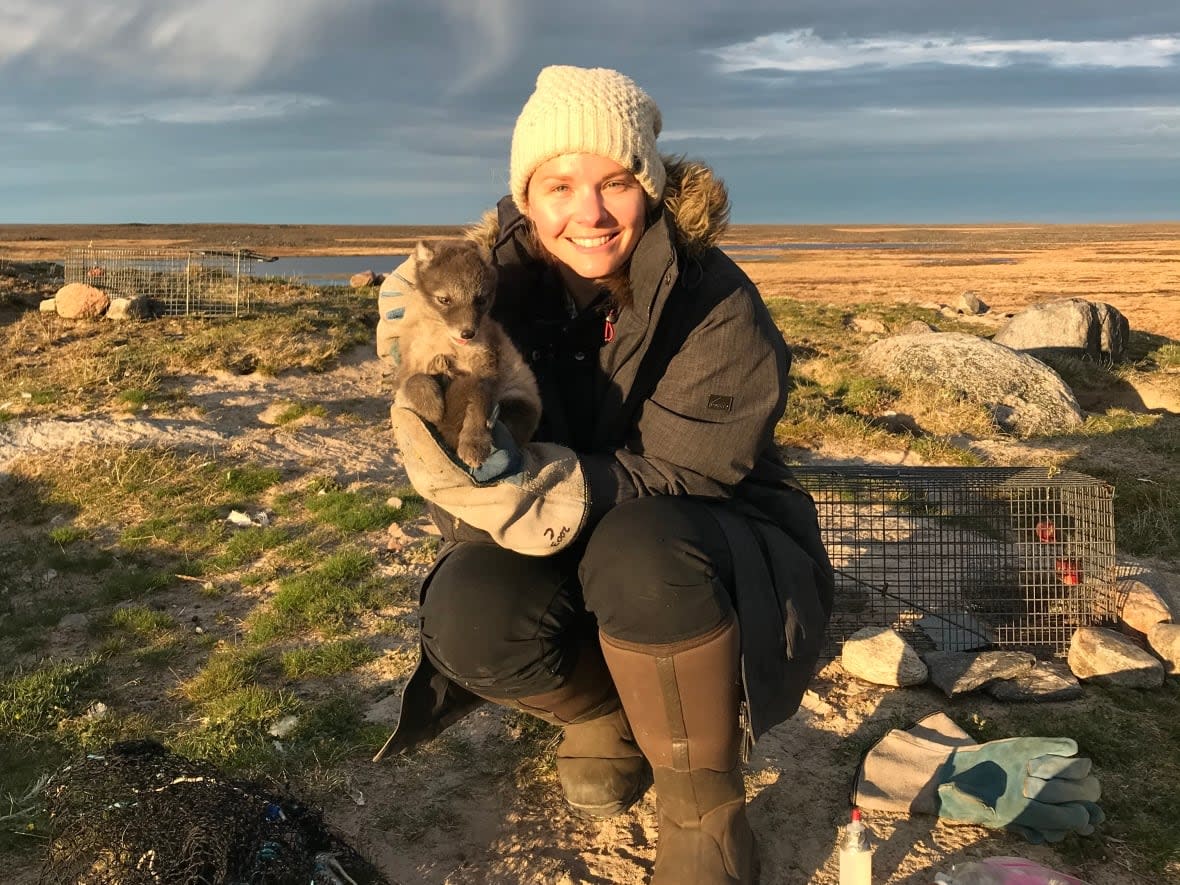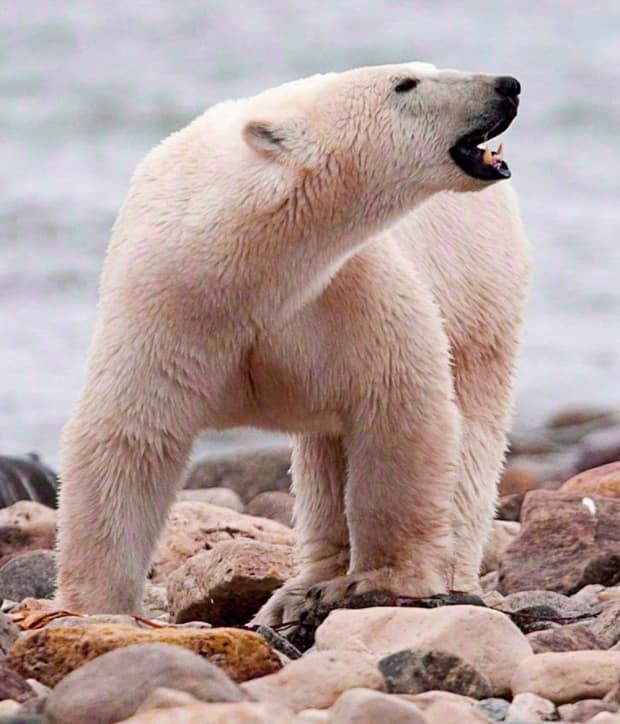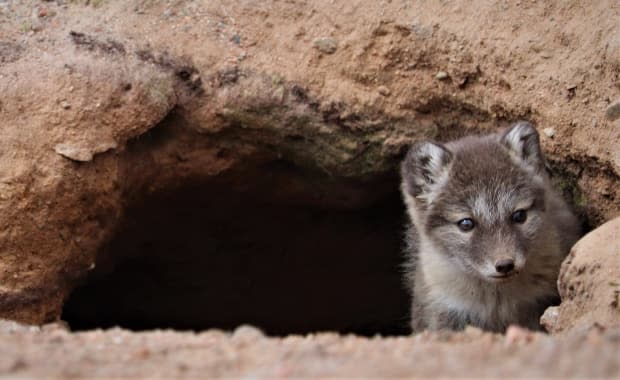Climate change could mean some Arctic animals will be more vulnerable to disease spread by insects: researcher

A warming climate could mean some Arctic animals will be more vulnerable to parasites and disease-causing pathogens, says a researcher who studies diseases transmitted from insects to animals.
While there are still more questions than answers on the topic, the changing climate could have a dramatic impact on the transmission of disease in Arctic wildlife — partly because many disease-causing pathogens are spread by insects, which tend to do better in warmer conditions — said Kayla Buhler, a veterinary researcher at the University of Saskatchewan in Saskatoon.
"We see increases in temperature, as well as we're seeing changes in precipitation up north," said Buhler. "Those two things are very important for insects."
Buhler studies Arctic foxes and has studied polar bears in the western Hudson Bay region. Much of her current research is based in and around the Nunavut communities of Cambridge Bay and Gjoa Haven, where she works with community members there to track wildlife health and the presence of disease.
"Sometimes, with some viruses in mosquitoes, the warmer the temperatures get, the easier a mosquito can transmit those viruses," she said. "So, temperature is a very important factor when it comes to insect-borne diseases."
Various forms of transmission
Earlier this year, Buhler and a team of researchers published a paper on pathogens, climate, and the western Hudson Bay polar bear population. The researchers studied data from the 1980s and 1990s and found a correlation between the prevalence of pathogens among bears and warmer summers.
Buhler said warmer summers mean bears are spending less time hunting on the sea ice and more time on land — where they're more exposed to disease-causing bacteria.

"Of course, if they're spending more time on land, they probably will be exposed to more insect bites," she said. "So that's the first way that it might be transmitted."
Disease could also be transmitted through contact with infected water on land, or other bacteria-transmitting species such as rodents, she said.
Buhler said climate change and the diminishing Arctic sea ice will therefore "definitely impact the amount of pathogens that bears get exposed to," by forcing them onto land more often.
Climate change will also affect the vegetation in the North, and therefore the health and size of migratory bird populations, she said — adding the migratory birds can also be a "almost like a vehicle" for insects such as fleas.
Last year, Buhler and another team of researchers published a paper describing how a bacterium that causes cat-scratch fever was found in blood collected from Arctic foxes near Karrak Lake, Nunavut. Those foxes prey on migratory geese in that area, and the researchers hypothesized that a flea found in goose nests was the likely source of transmission of the bacterium.

"It's really important to look at the relationship between migratory birds and their impacts on disease transmission in the Arctic," she said. "And so that's kind of the next step and that's what we're hoping to focus on this summer."
'A big gap' in some wildlife population research
Buhler said a main purpose of her research is to help create a baseline of data about disease in Arctic wildlife and to track future changes.
"It's virtually impossible to take a look back, you know, 20 or 30 years, if you don't have the samples to go back to," she said. "So that's why we're trying to create a baseline so that future scientists can look at our data and see if there's any changes."

Susan Kutz, a professor of veterinary science at the University of Calgary who has researched parasites in caribou and muskoxen in the Canadian Arctic, agreed there's "a very incomplete story of what's out there."
"Pathogens in general have been sorely neglected in wildlife management and to a large part, I think that's because we don't understand them," Kutz said.
She said there has been a lot of research over the years on caribou populations and how they're changing, "but a big gap in those models has been the absence of considering the role of pathogens."
Kutz said there's even less known about pathogens among species considered lower-priority for subsistence needs in northern communities, such as Arctic hares or lemmings.
Like Buhler, Kutz has done a lot of work in the Cambridge Bay area, as well as Kugluktuk, Nunavut, and Ulukhaktok, N.W.T.
She relies on the knowledge and experience of northerners, and said survey data and samples supplied by hunters are invaluable in helping build a baseline of data on wildlife health.

"They have close connection to the land, a long history with the land," she said. "So when things change, they will see it and recognize it.
"They'll have the context to see it and recognize it much better than a researcher that goes up there once a year."
Kutz said she hopes to see more emphasis in the scientific community on pathogens and wildlife disease, particularly in the Arctic. There, the environment is changing faster than many places on earth but it's also a relatively simple environment to study and monitor, compared to tropical ecosystems or those more affected by other human-caused changes, Kutz said.
"So what that does is allows us to really investigate the impact of climate change on host-pathogen interactions," she said.
"The science we do in the Arctic, whether it's on parasites or pathogens, or in other fields, it's really important for understanding global climate change."
Kutz said "despite all the bad it's done," the COVID-19 pandemic may shift some priorities in the scientific world.
"The current pandemic has definitely raised the profile of infectious disease," she said.
"[And] the importance of understanding it."


